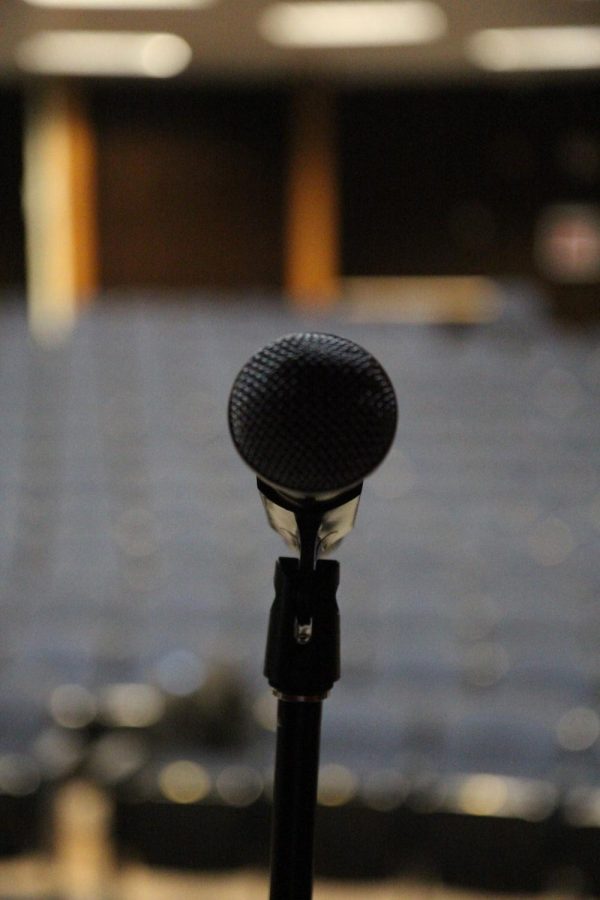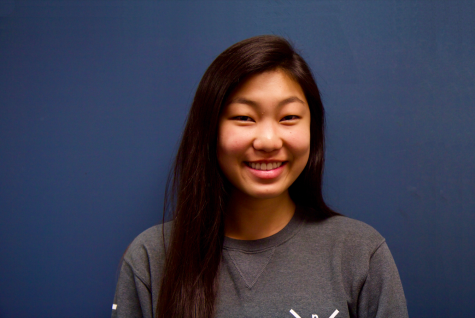Analyzing the theory of social facilitation
A glimpse into the effects of an audience on performance
May 25, 2017
Making his way onto the podium, the first candidate for the class president position clears his throat and looks across the room with hundreds of pairs of eyes staring right back at him. He has been preparing for this speech for weeks now, but as he looks at the large audience, he begins to feel overwhelmed with nervousness. He takes a deep breath and begins to recite his speech cohesively and thoroughly, managing to avoid blunders and humiliation, and by the conclusion of his speech, is met with endless rounds of applause. Such instances are referred to as social facilitation, the theory that having people observing or working alongside an individual may boost his or her performance.
The first laboratory experiment regarding social facilitation dates back to 1898, when psychologist Norman Triplett gave children a fishing reel and told them to wind the reel in. During the study, he observed that children worked faster when they were in the presence of other children performing the same task as opposed to when working alone. His experiment exhibited the “co-action effect,” a phenomenon where the presence of others performing the same task improves one’s performance.
“I feel like if you’re doing something individually , you’re by yourself and you feel more eased to see other people doing the same exact thing but when I’m sitting alone like doing homework at home or swimming by myself, I’m isolated and I don’t like it,” said sophomore Ishika Kamchetty. “Groups just ease the whole situation on a greater level.”
Another type of social facilitation is the “audience effect,” in which performance is improved through the mere presence of a passive spectator or audience. An experiment conducted by psychologist Lee Edward Travis in 1925 found that the subjects of his study were better at carrying out psychomotor tasks, tasks that use controlled movements of the body, when they were in front of an audience. Similarly, in 1935, psychologist John Dashiell gathered subjects and had them do multiplication problems. He noticed that the presence of an audience increased the number of multiplication problems each subject completed, and that the quality of performance depended on how the subjects interacted with the audience. If the subjects responded to the audience, they were distracted from the task at hand and therefore performed poorly.
“It is really hard to have a good experiment that is mimicking real life conditions,” said school psychologist Brittany Stevens. “But I do think that in general, people tend to perform better if they have an audience watching them only because it heightens the stakes by being observed. It is not just your own performance you have to think about but also what others may think of you.”
As a college student, Stevens participated in experiments related to social facilitation as part of an internship for a professor in the psychology department. Her role was to be a confederate by being the audience for another student and listening to their speech as if she was also just another student. However, she was instructed to react in a predetermined manner, either with negative or positive body language, regardless of how good the speech was. The subjects were then supposed to rate themselves based on how they believe they did.
“The results from the experiment came out with the people who had the positive reaction condition were significantly more likely to say that they had done a good job,” said Stevens. “People who had the negative, were significantly more likely to say that they hadn’t done very well and would rate themselves negatively.”
While interactive audiences have the opportunity to encourage one’s performance, they could discourage the performer as well. Both the skill level and the complexity of the task play a role in determining how an audience will affect performance. For instance, during sports requiring strength and endurance, such as team sports, the audience’s cheering can boost players’ performances. On the other hand, sports where finer motor skills and more concentration are required, a loud, cheering audience can be detrimental to one’s performance. For example, in sports such as gymnastics, tennis and badminton, a roaring audience may not be beneficial, as the athletes can make mistakes in their timing and lose focus while trying to tune out the crowd.
“I feel more pressure when people who are better than me [in badminton] are watching me,” said freshman Sanjana Narayanan. “It makes me feel like if I make a mistake, they will think that I can’t play, and that creates more pressure on me.”
As a result, there are several theories that debunk social facilitation. The Distraction-Conflict Theory, for example, states that the presence of an audience creates an attentional conflict between concentrating on a given task and concentrating on those watching for the performer. Especially when people are carrying out complex tasks, they may perform worse due to an attentional overload. Psychologist Joseph Pessin noted this theory in 1933 when he performed an experiment in which the presence of spectators interfered with the learning of nonsense-syllables, lists of syllables that are used to investigate memory and learning.
The effect an audience has on a person depends on an individual’s personality as well. Some people may feel stressed regardless of how large or small their audience is. In contrast, others may not be affected by their audience at all, especially if the audience consists of their peers.
“In drama, the audience never really hindered my performance, and I don’t think actors are really affected by the audience,” said junior Sultaan Ahmad. “I think this is because an actor is less worried about their performance, since they are representing only a façade.”
From taking an exam in a full room to playing a sport before an audience, one’s overall performance is greatly affected by social facilitation. The mere presence of an audience can be either beneficial or detrimental depending on the situation. Each individual’s varying response to this social influence can determine the final outcome of the task they perform.




































































